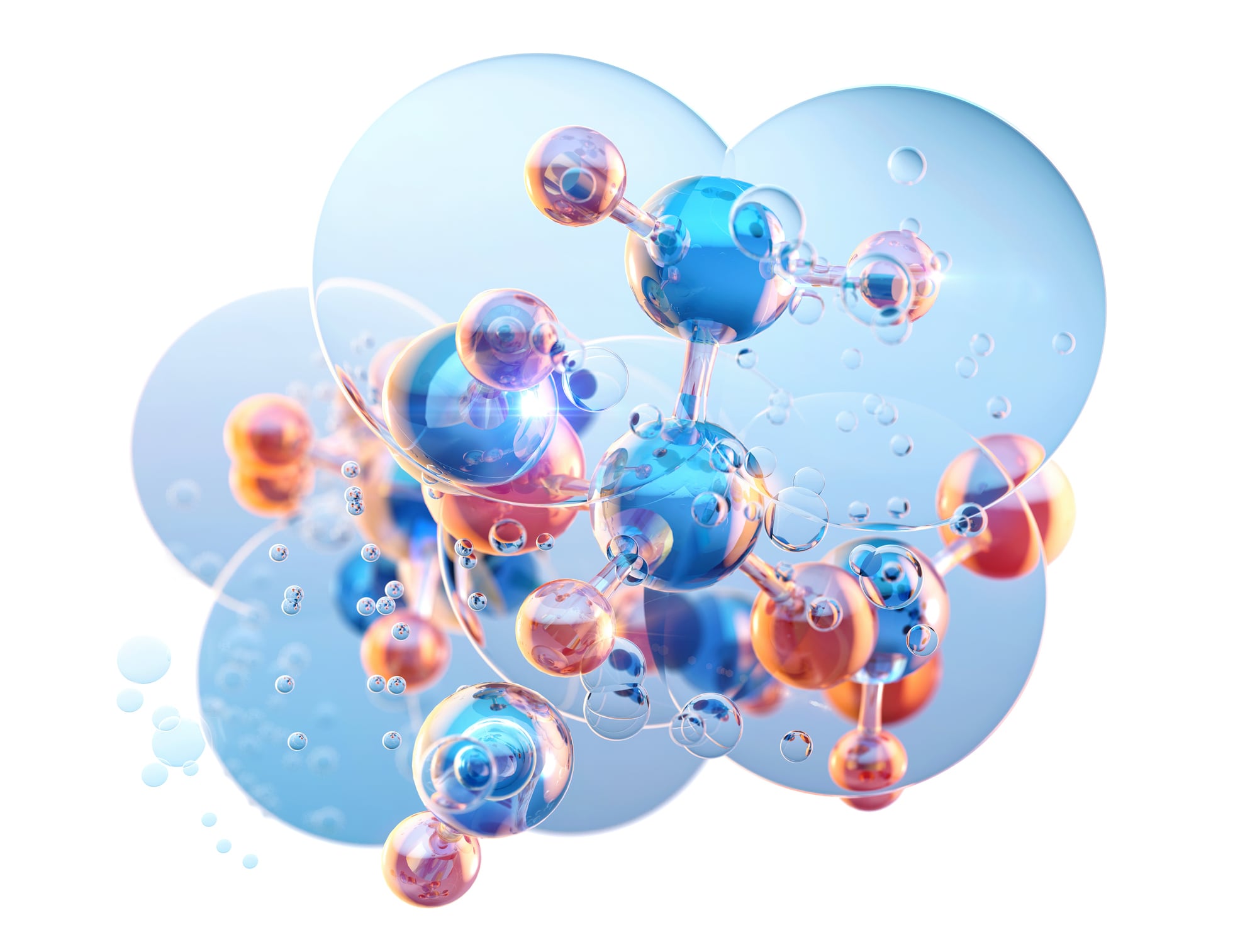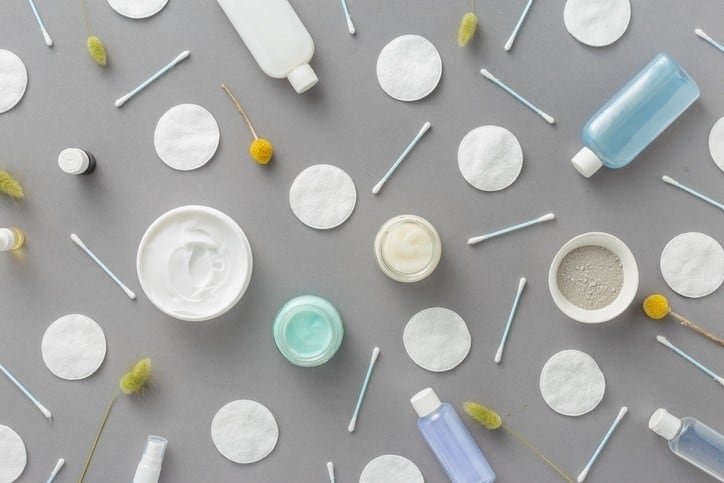Originally developed for pharmaceutical use, these molecules are now transforming skin care, with applications in anti-ageing, whitening, moisturising, wound healing, and antimicrobial protection. This is particularly promising, as it means peptides can bring the scientific rigour of drug development into beauty products.
Peptides also show great commercial potential — the global market for cosmetic peptides is expected to more than double, growing from USD3.77bn in 2024 to over USD8.2bn by 2032. This rapid growth is powered by better synthesis technologies, artificial intelligence (AI), and novel delivery systems.
Pharmaceutical roots drive cosmetic innovation
Peptides first entered the pharmaceutical scene over a century ago. Insulin, discovered in 1921, marked one of the first major therapeutic peptide breakthroughs. Later, peptide drugs like octreotide and GLP-1 analogues for diabetes and obesity followed.
In the 1960s, the invention of solid-phase peptide synthesis (SPPS) made it easier to produce peptides in large quantities. This method allowed for the efficient assembly of complex peptides, laying the groundwork for industrial-scale manufacturing.
By the 1990s, these pharmaceutical tools began showing up in skin care. The collagen-boosting peptide KTTKS, first identified in 1993, was one of the earliest examples of a medical peptide repurposed for cosmetics.
Synthesis techniques get faster, greener, and more cost-effective
Manufacturers now have several options for producing peptides: traditional solution-phase synthesis (CSPS), SPPS, and liquid-phase peptide synthesis (LPPS).
SPPS remains the gold standard for precision and efficiency, especially in producing complex peptides. However, it has environmental drawbacks, mainly due to solvent waste. Recent innovations such as wash-free SPPS can reduce chemical waste by up to 95%, making the process more sustainable.
LPPS combines the benefits of both SPPS and CSPS. It is especially useful for making simpler peptides like GHK-Cu, a popular cosmetic ingredient used for its skin-repairing and anti-ageing benefits. There has also been a shift towards greener synthesis methods, which is important for scaling up production without compromising sustainability.
Additionally, enzymatic and recombinant DNA-based methods are gaining traction. These approaches use biological systems, such as engineered bacteria, to produce peptides more sustainably.
For example, recombinant yeast has been used to make L-carnosine, an antioxidant peptide used to protect skin from environmental damage.
AI and display technologies speed up discovery
New peptide discovery has become faster, thanks to AI-driven design and display technologies like phage display and mRNA display. These systems simulate natural selection in the lab, helping researchers quickly find peptides that bind strongly to target proteins and design peptides with specific cosmetic benefits, such as stimulating collagen or calming inflammation.
Companies like Bicycle Therapeutics and PeptiDream have built proprietary platforms around these technologies, and their innovations are already spilling over into the cosmetic space. For instance, phage display was used to identify P12-3A, a peptide that boosts collagen and could have therapeutic and cosmetic uses.
Peptides for every function
Peptides can be tailored to target specific skin concerns, such as ageing, hyperpigmentation, dehydration, damage and infection.
For example, Palmitoyl Pentapeptide-4 (also known as Matrixyl) is a modified version of KTTKS with better skin penetration. It stimulates collagen and elastin production, helping reduce wrinkles and improve skin texture. Clinical studies show it increases elastic fibre density and decreases wrinkle volume.
Other peptides, such as acetyl hexapeptide-8 (Argireline), mimic the action of botulinum toxin (Botox) by relaxing facial muscles to reduce expression lines. Its main upsides are that it is safer than Botox and doesn’t require injections.
Furthermore, carnosine and glutathione are antioxidant peptides that combat free radical damage from UV exposure, slowing down skin ageing.
At the same time, whitening peptides like tetrapeptide-30 and hexapeptide-2 block melanin production at the source by interfering with the skin’s signalling pathway that responds to UV light. They offer a safer alternative to traditional agents like hydroquinone, which can be harsh or toxic. Glutathione also plays a dual role in whitening and antioxidant defence, further boosting its appeal in multifunctional skin care formulas.
When it comes to moisturisation, peptides like Syn-Hycan stimulate the skin to produce more hyaluronic acid, a key molecule for hydration and elasticity. Others work by improving the function of aquaporins (proteins that help water move between skin cells), improving overall skin moisture balance.
Other peptides, such as GHK-Cu and Tripeptide-1, help the skin regenerate by encouraging collagen and elastin synthesis. They also promote wound healing and calm inflammation, making them ideal for sensitive or damaged skin.
At the same time, short-chain antimicrobial peptides (AMPs) are being explored as ingredients to fight skin infections and acne. Their small size makes them easy to produce, and they are less likely to trigger immune responses.
Research is also focusing on enhancing their antimicrobial action while reducing potential side effects. Modifying their structure or combining them with metals can increase effectiveness and reduce toxicity.
Challenges ahead
Despite their potential, peptides face hurdles in cosmetic applications. Peptides can be unstable in formulations and may not penetrate the skin deeply enough to work effectively. The cost of production also remains high, especially for complex or modified peptides.
To tackle these issues, manufacturers are developing delivery systems like nanocarriers and cell-penetrating peptides. These systems help peptides reach the right skin layers while protecting them from degradation.
Another focus is molecular modification— adding lipid chains, altering amino acid sequences, or cyclising the peptide to improve stability and skin absorption.
In the US, the FDA now requires cosmetic brands to meet stricter safety standards under the Modernization of Cosmetics Regulation Act (MoCRA) of 2022. This includes evaluating skin penetration, stability, and potential allergens.
In Europe, Regulation EC 1223/2009 enforces similar rules and bans animal testing. These regulatory changes are pushing brands to back up peptide claims with real science.
China’s rise in peptide innovation
China is quickly becoming a key player in the peptide cosmetics market. Between 2017 and 2022, the market grew at a CAGR of 17.22%, reaching USD23m.
The Chinese government’s streamlined regulations have encouraged local R&D and new product launches. As of January 2025, 22 of the 226 new cosmetic ingredients approved in China were peptide-based.
Companies are also aligning with global sustainability trends, using green synthesis and biodegradable delivery systems.
The researchers concluded: “Future directions should focus on integrating pharmacological precision (such as CRISPR-based target validation) with cosmetic needs while advancing eco-friendly synthesis methods. Collaborative efforts between pharmaceutical and cosmetic industries could unlock next-generation peptides with dual functionalities — therapeutic and aesthetic — ushering in an era of ‘cosmeceutical’ grounded in rigorous science.”
Source: Cosmetics
“Peptides in Cosmetics: From Pharmaceutical Breakthroughs to Skincare Innovations”
https://doi.org/10.3390/cosmetics12030107
Authors: Yuxiang Tang, et al.




